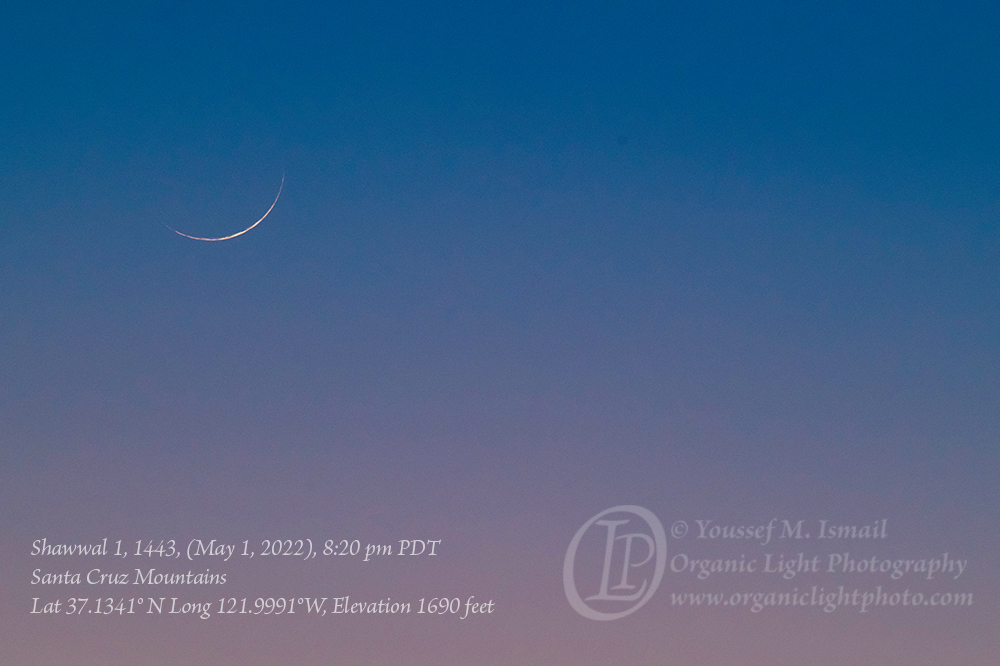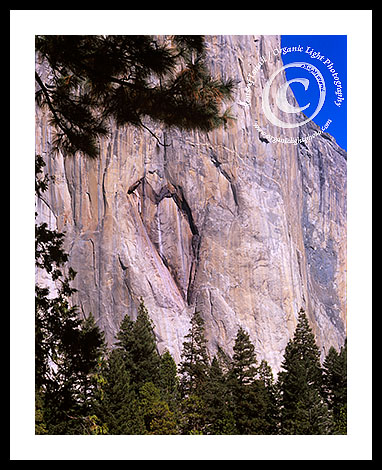Up And To The Left
Just over a week ago a video was released by Zaytuna College, where I teach astronomy, mathematics, and Islamic jurisprudence, about sighting the new crescent moon to mark the beginnings of the lunar months of the Islamic calendar.
For years, the start of the Islamic months has been hotly debated between two camps. One camp advocates to adhere to the tradition of the Prophet Muhammad, peace and blessing of God be upon him, to go out and actually witness the new crescent moon, and then have the witnesses testify to the sighting to mark its beginning. However, this approach has an inherent variability in it because the new crescent moon will reappear 29 or 30 days after its last appearance. The other camp advocates determining the beginning of the months through an astronomical calculated approach such that the calendar can be predetermined for years in advance.
Both sides have their arguments, and perhaps both have merit, but one cannot feel a calculation. A calculation is abstract. It is lifeless. To most, it means nothing because they cannot apprehend how the resulting conclusive decision to start the month was derived. For most, they would not understand how to go about the calculation itself, they would in essence be calculatedly illiterate.
It baffles me a bit that the camp arguing for the calculation approach always quotes the tradition (Hadith) from the Prophet Muhammad, peace be upon him, where He says “We are an unlettered community, we neither write nor calculate, the month consists of 29 (motioning with his hands showing 29 fingers) or 30 (motioning with his hands showing 30 fingers) days“. The camp arguing for calculations cites this hadith and says that modern Muslims are no longer a people that neither write nor calculate so we should use calculations. This tradition, however, should be interpreted as a description of the community at that time not a prescription of how the Muslim community should be. Not all the Muslims from 1400 years ago were unlettered. Some did know how to write and very likely some did know how to perform calculations, as they did have and use an intercalated lunar calendar which does require knowing how to do some calculations. However, I would argue, that most people, Muslim or otherwise are illiterate when it comes to the mathematics and the understanding needed to carry out the calculations needed to determine the start of a lunar month, so the tradition does in fact still describe people today as it did 1400 years ago.
To get a sense of what I mean, the following must be determined for any given time on any given date to determine the position of the moon in the sky:
- The time must be determined in Julian Centuries
- Next, the Moon’s mean longitude is determined
- Then, the Moon’s elongation
- followed by determining the Sun’s anomaly (which has its own set of calculations)
- Next, the Moon’s anomaly is determined.
- A series of Periodic terms need to be summed for the moon’s longitude and distance from the Earth.
- Then the Eccentricity of the orbit of the Earth around the sun is needed
- Finally, the geocentric longitude, geocentric latitude, and geocentric distance of the moon can be calculated.
- The whole process is then repeated over and over for every second until the geocentric longitude position of the moon matches that of the sun, of course, further calculations are needed to obtain the geocentric longitude of the sun as well.
Did I lose any of you with any of the above steps?
So where does that leave the common Muslims today regarding how to determine the start of the lunar Islamic months? There is a principle in problem-solving known as Occam’s Razor. Briefly, it is generally understood that with competing theories or solutions to a problem, the simpler one is to be preferred. To that end, there is another well-known tradition from the Prophet Muhammad, peace be upon him, where He says, “Do not start the fast until you see the new crescent moon, and do not break the fast until you see the new crescent moon. If the new crescent moon is obscured from you, then complete a full thirty days”. This approach entails going outside once a lunar month to search for the new crescent moon in the post-sunset sky. It only requires the ability to see and of course, count 29 days from the last time the new crescent was seen. It is clearly the simpler solution to the problem of determining the beginning of the lunar months.
The simpler solution does not exclude the possibility of using astronomy to help one find the moon in the sky, it just does not require a person to learn astrodynamics to complete lengthy calculations in abstraction.
Certainty is a beautiful thing. Nothing brings true certainty better than experience. Experiencing the new crescent moon appearing in the post-sunset sky is something that can’t be explained, it must be felt. This evening, 29 days since the last time we saw the new crescent moon, we went out to search for that elusive sliver of light. It was hard. The new crescent moon this month was incredibly thin. A delight to see. Bringing a filling of the heart with both Joy and Certainty. Here is this month’s moon, with its tips pointing up and to the left, if you watched the video you’ll know what I mean.

With the sighting of this moon, the Blessed month of Ramadan comes to a close and it ushers in the Festival of Breaking Fast. A joyous day where Muslims all over the world celebrate by eating, drinking, and Remembering their Lord, for whom they abstained from food and drink for an entire month during the day.
Eid Mubarak to all my Muslim readers, and as always Peace to all.















